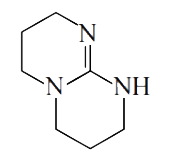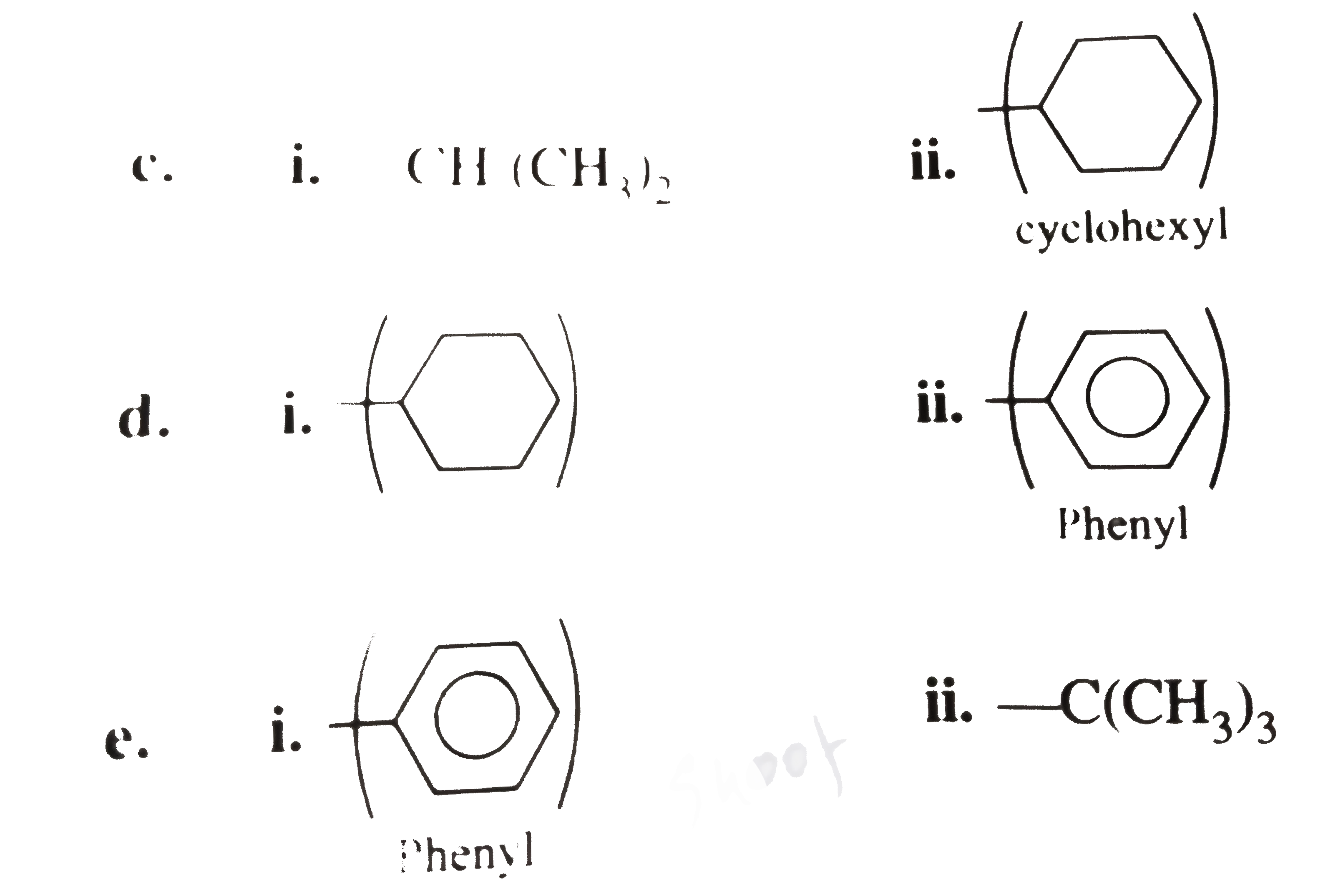Which of the reagents listed below could be added to water to make 0.1M solutions of each of the following ions?
a. ⊕NH4
b. CH3COOΘ
c. C1Θ
i. NH3 ii. NH4C1
iii. CH3COOH
iv. CH3COONa
v. HC1
vi. NaC1.
To solve the question of which reagents can be added to water to create a 0.1M solution of the specified ions, we will analyze each ion and the corresponding reagents step by step.
Step 1: Analyzing NH4+ Ion
1. Reagent: NH3
- NH3 (ammonia) is a weak base. When dissolved in water, it partially dissociates to form NH4+ and OH- ions.
- The dissociation is not complete, meaning that the concentration of NH4+ produced will be less than 0.1M.
- Conclusion: NH3 cannot be used to prepare a 0.1M solution of NH4+.
2. Reagent: NH4Cl
- NH4Cl (ammonium chloride) is a salt of a weak base (NH3) and a strong acid (HCl).
- When dissolved in water, it dissociates completely into NH4+ and Cl- ions.
- Therefore, it can produce a 0.1M solution of NH4+.
- Conclusion: NH4Cl can be used to prepare a 0.1M solution of NH4+.
Step 2: Analyzing CH3COO− Ion
1. Reagent: CH3COOH
- CH3COOH (acetic acid) is a weak acid. When dissolved in water, it partially dissociates to form CH3COO- and H3O+ ions.
- The degree of dissociation is low, so the concentration of CH3COO- will be less than 0.1M.
- Conclusion: CH3COOH cannot be used to prepare a 0.1M solution of CH3COO-.
2. Reagent: CH3COONa
- CH3COONa (sodium acetate) is a salt of a weak acid (acetic acid) and a strong base (sodium hydroxide).
- When dissolved in water, it dissociates completely into CH3COO- and Na+ ions.
- Therefore, it can produce a 0.1M solution of CH3COO-.
- Conclusion: CH3COONa can be used to prepare a 0.1M solution of CH3COO-.
Step 3: Analyzing Cl− Ion
1. Reagent: HCl
- HCl (hydrochloric acid) is a strong acid. When dissolved in water, it dissociates completely to form H3O+ and Cl- ions.
- Therefore, it can produce a 0.1M solution of Cl-.
- Conclusion: HCl can be used to prepare a 0.1M solution of Cl-.
2. Reagent: NaCl
- NaCl (sodium chloride) is a salt of a strong acid (HCl) and a strong base (NaOH).
- When dissolved in water, it dissociates completely into Na+ and Cl- ions.
- Therefore, it can produce a 0.1M solution of Cl-.
- Conclusion: NaCl can be used to prepare a 0.1M solution of Cl-.
Final Summary of the Reagents for Each Ion:
- For NH4+: NH4Cl (only)
- For CH3COO−: CH3COONa (only)
- For Cl−: HCl and NaCl (both)
- NH3 (ammonia) is a weak base. When dissolved in water, it partially dissociates to form NH4+ and OH- ions.
- The dissociation is not complete, meaning that the concentration of NH4+ produced will be less than 0.1M.
- Conclusion: NH3 cannot be used to prepare a 0.1M solution of NH4+.
- NH4Cl (ammonium chloride) is a salt of a weak base (NH3) and a strong acid (HCl).
- When dissolved in water, it dissociates completely into NH4+ and Cl- ions.
- Therefore, it can produce a 0.1M solution of NH4+.
- Conclusion: NH4Cl can be used to prepare a 0.1M solution of NH4+.
- CH3COOH (acetic acid) is a weak acid. When dissolved in water, it partially dissociates to form CH3COO- and H3O+ ions.
- The degree of dissociation is low, so the concentration of CH3COO- will be less than 0.1M.
- Conclusion: CH3COOH cannot be used to prepare a 0.1M solution of CH3COO-.
- CH3COONa (sodium acetate) is a salt of a weak acid (acetic acid) and a strong base (sodium hydroxide).
- When dissolved in water, it dissociates completely into CH3COO- and Na+ ions.
- Therefore, it can produce a 0.1M solution of CH3COO-.
- Conclusion: CH3COONa can be used to prepare a 0.1M solution of CH3COO-.
- HCl (hydrochloric acid) is a strong acid. When dissolved in water, it dissociates completely to form H3O+ and Cl- ions.
- Therefore, it can produce a 0.1M solution of Cl-.
- Conclusion: HCl can be used to prepare a 0.1M solution of Cl-.
- NaCl (sodium chloride) is a salt of a strong acid (HCl) and a strong base (NaOH).
- When dissolved in water, it dissociates completely into Na+ and Cl- ions.
- Therefore, it can produce a 0.1M solution of Cl-.
- Conclusion: NaCl can be used to prepare a 0.1M solution of Cl-.
- For NH4+: NH4Cl (only)
- For CH3COO−: CH3COONa (only)
- For Cl−: HCl and NaCl (both)
Topper's Solved these Questions
- IONIC EQUILIBRIUMBOOK - CENGAGE CHEMISTRY ENGLISHCHAPTER - IONIC EQUILIBRIUMEXERCISE - Exercises Subjective (Buffer Solutions)
2 Videos
- IONIC EQUILIBRIUMBOOK - CENGAGE CHEMISTRY ENGLISHCHAPTER - IONIC EQUILIBRIUMEXERCISE - Exercises Subjective (Hydrolysis Of Salt)
2 Videos
- IONIC EQUILIBRIUMBOOK - CENGAGE CHEMISTRY ENGLISHCHAPTER - IONIC EQUILIBRIUMEXERCISE - Ex 8.5
6 Videos
- HYDROGEN, WATER AND HYDROGEN PEROXIDEBOOK - CENGAGE CHEMISTRY ENGLISHCHAPTER - HYDROGEN, WATER AND HYDROGEN PEROXIDEEXERCISE - Subjective Archive (Subjective)
3 Videos
- ISOMERISMBOOK - CENGAGE CHEMISTRY ENGLISHCHAPTER - ISOMERISMEXERCISE - Assertion-Reasoning Type
1 Videos
Similar Questions
Identify the stronger base in each of the following pairs :
(i) CH3−O∣∣C−NH2 or CH3NH2 (ii)_E01_906_Q01.png)
View SolutionHow much of the following are strong electrolytes?
a. NH3 b. NH4Cl c. CH3COOH
d. CH3COONa e. HCl f. NaCl
View SolutionWhich of the following are isoelectronic species ?
⊕CH3(I),ɵNH2(II),⊕NH4(III) and NH3(IV)
View SolutionWhich of the following ions or compounds in a solutions tends to produe an acidic, a basic, or a neutral solution.
a. i. C2H3OΘ2 ii. Na⊕ iii. So2−3 iv. FΘ v. NH⊕4
b. i. CH3COONa ii. ZnCI2 iii. KNO3 iv. NH4CI
c. i. NaCN ii. K2CO3 iii. H3PO4 iv. NaF
d. i. NH4NO3 ii. Ba2CO3 iii. NaHSO4 iv. NaOCI v. HOCI vi. AI(NO3)3
View SolutionWrite the cations and anions present (if any) in the following compounds?
a) CH3COONa
b) NaCl
c) H2
d) NH4NO3
View SolutionThe increasing order of PKb for the following compounds will be
(1) NH2−CH=NH,

(3) CH3NHCH3
View SolutionArrange the following ligands in the decreasing order of priority.
a. i.−OH , ii. −COOH
iii −CH2OH , iv.CH(OH)CH3
b. i. −NH2 ii. −C≡N
iii. −NO2 iv. −CH2NH2

View SolutionPick out the isoelectronic structures from the following
(i) CH+3 , (ii) H3O+
(iii) NH3 , (iv) CH−3
View SolutionArrange the following anilines in decreasing order of basicity
1. C6H5NH2
2. o−CH3C6H4NH2
3. m−CH3C6H4NH2
4. p−CH3C6H4NH2
View SolutionOn the basis of VSEPR theory, predict the shapes of the following molecules/ions?
a. AsF5 , b. SbCl3 , c. F2O , d.H3O⊕
e. HC≡CH , f. ⊕NH4 , g. o−NH2 , h. GeF4
View Solution
